Lyudmila Pavlichenko was 24 years old when she joined the Red Army during World War II. Within a year, she was the deadliest female sniper in history.
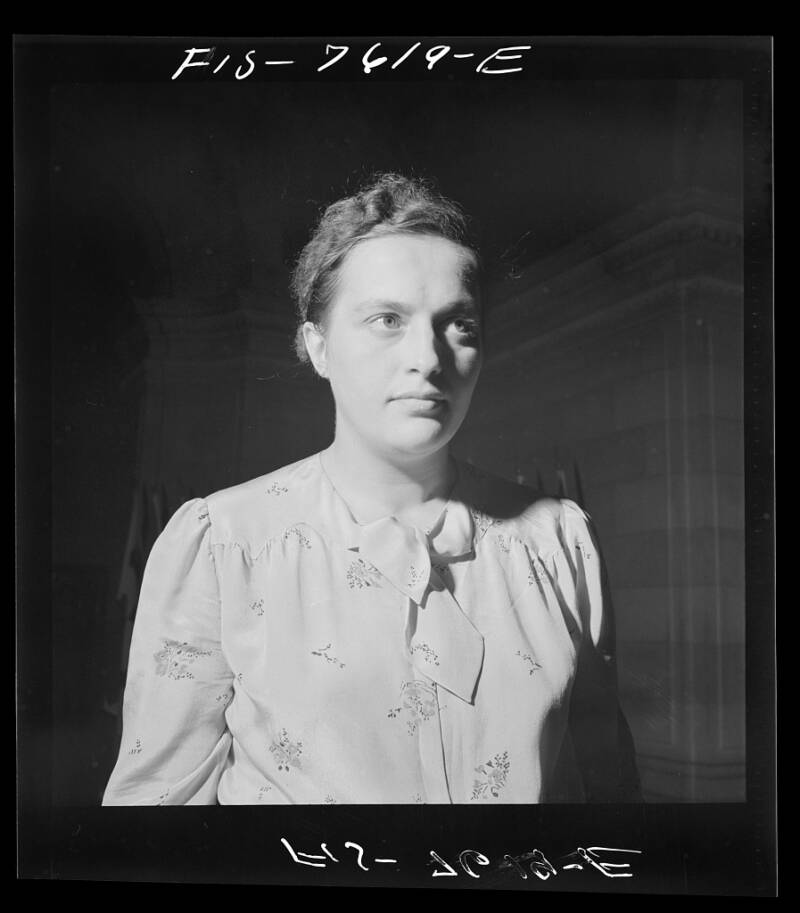
Library of CongressLyudmila Pavlichenko, the Soviet sniper who earned the nickname “Lady Death” during World War II.
For most snipers, receiving threats from the enemy would be terrifying. For Lyudmila Pavlichenko, however, it was delightful. When the Germans threatened to tear her into 309 pieces, the exact number of Axis troops she had killed, she reveled in it.
“They even knew my score!” she exclaimed.
Delight in her opponents’ failures was how Lyudmila Pavlichenko lived her life. As a sniper for the Soviet Union during World War II, she killed 309 enemy soldiers. At 24 years old, she had joined a group of 2,000 female snipers in the Red Army, only 500 of whom would survive until the end of the war.
To this day, Pavlichenko is considered the deadliest female sniper of all time. She’s also among one of the best snipers in history, sharing the leaderboard with Chuck Mawhinney, Adelbert Waldron, and even Simo Häyhä, Finland’s “White Death.”
How Lyudmila Pavlichenko Became A Red Army Sniper
Lyudmila Mikhailovna Pavlichenko (née Belova) was born in 1916 in Bila Tserkva, which is now part of Ukraine. Her father, Mikhail Belov, was a Communist Party member who had served in the Red Army.
As a child, Pavlichenko was a self-described tomboy. When she was 14, her family moved to Kyiv, where she enrolled in a sharpshooter class and earned a marksmanship badge. Even in her youth, she was outspoken about the role of women in society and was constantly trying to one-up her male counterparts. In fact, her competitive spirit was how she ended up training as a sniper.
“When a neighbor’s boy boasted of his exploits at a shooting range,” she recalled during a speech in 1942, “I set out to show that a girl could do as well. So I practiced a lot.”
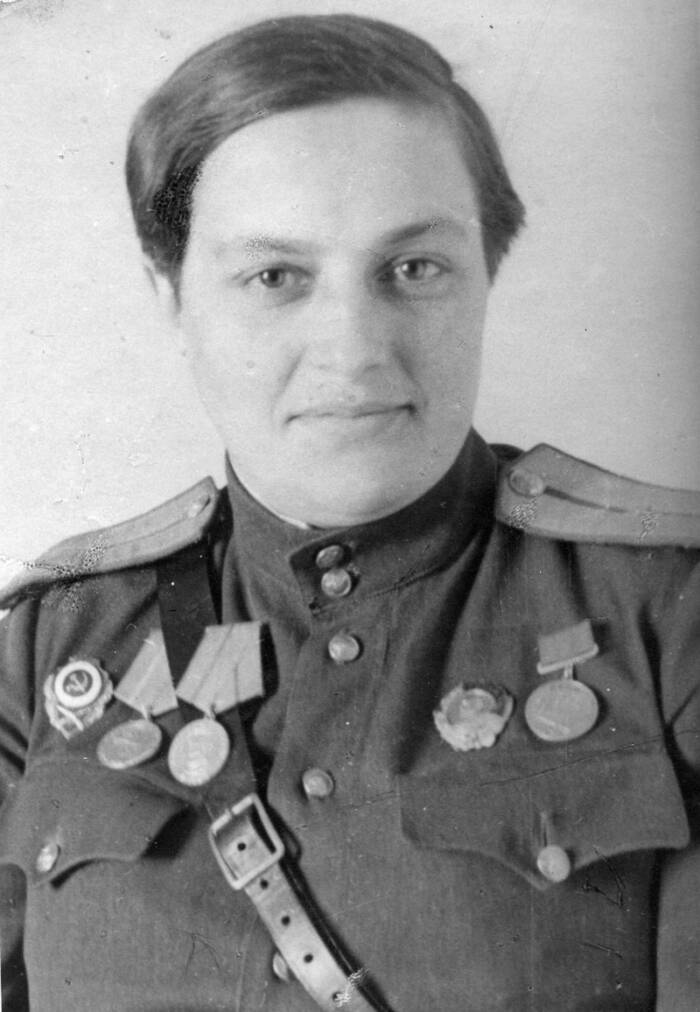
Public DomainA portrait of Lyudmila Pavlichenko in her military uniform.
In 1932, when she was just 16, Pavlichenko got married and had a son. However, the relationship was not successful, and she returned home to her parents. She started working at a local factory while studying to become a teacher. In June 1941, during her fourth year of school, Nazi Germany launched Operation Barbarossa and invaded the U.S.S.R.
Lyudmila Pavlichenko jumped at the opportunity to serve her country. She rushed to the recruiting office in Odessa and volunteered to join the infantry.
“They wouldn’t take girls in the army, so I had to resort to all kinds of tricks to get in,” Pavlichenko said in 1942. The registrars urged her to become a nurse, but she refused. After listing the sharpshooter courses she’d successfully completed, she was ultimately assigned to the Red Army’s 25th Rifle Division.
Still, her fellow soldiers were wary. To test her, they had her perform an impromptu audition: shoot two Romanians who were working for the Nazis from a distance of a quarter-mile. “When I picked off the two, I was accepted,” she said, quipping, “They are not figured in my score total because they were test shots.”
Pavlichenko soon threw herself into battle — and she quickly began proving her worth.
History’s Deadliest Female Sniper Earns The Nickname ‘Lady Death’
Over the next few months, Lyudmila Pavlichenko remained as steady and true as ever. During the Siege of Odessa from August to October 1941, she recorded 187 confirmed kills. That number rose to 257 between October 1941 and May 1942 as she picked off enemy after enemy while the Siege of Sevastopol raged on.
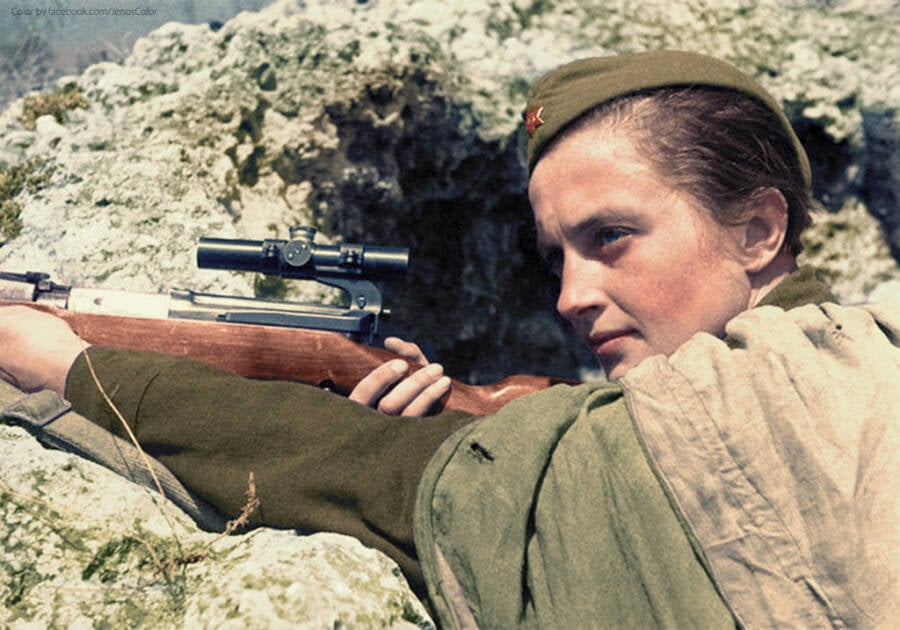
Public Domain“Lady Death” shooting from a trench in 1942.
During this time, she married her second husband, who was also a sniper — but he was killed in battle shortly after they wed.
As the war went on, Pavlichenko began accepting risky counter-sniping assignments in which she essentially engaged in deadly duels with enemy snipers. She won all 36, even one that lasted three days.
“It was a hunt to the death,” she later recalled. “That was one of the tensest experiences of my life. Finally he made one move too many.”
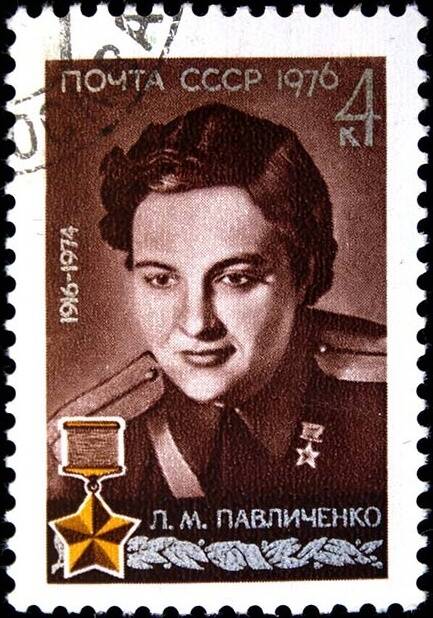
Public DomainA 1976 Soviet Union postage stamp dedicated to “Lady Death.”
Less than a year after joining the Red Army, Pavlichenko had killed 309 enemies, including the 36 Axis snipers. The Nazis were beginning to take notice of her. They shouted into loudspeakers at the front lines, “Lyudmila Pavlichenko, come over to us. We will give you plenty of chocolate and make you a German officer.” Soon, those bribes turned into threats: “You will not escape us. When we catch you we will tear you into 309 pieces.” The Germans also began referring to her as “the Russian bitch from Hell.”
Then, in June 1942, she was injured by mortar shrapnel and evacuated to a hospital. When she recovered, she wasn’t sent back to the front lines but instead to the United States, where she was assigned to rally support for a second European front to take pressure off the Red Army.
Lyudmila Pavlichenko’s Wartime Tour Of The United States
“Lady Death” arrived in Washington, D.C., in the fall of 1942, becoming the first Soviet citizen to be welcomed at the White House. While there, she struck up a friendship with First Lady Eleanor Roosevelt.
The two bonded over their shared views on women’s rights, and Roosevelt even accompanied Pavlichenko on her tour across the U.S. The two maintained correspondence over the years, and they reunited when Roosevelt toured Moscow in 1957.
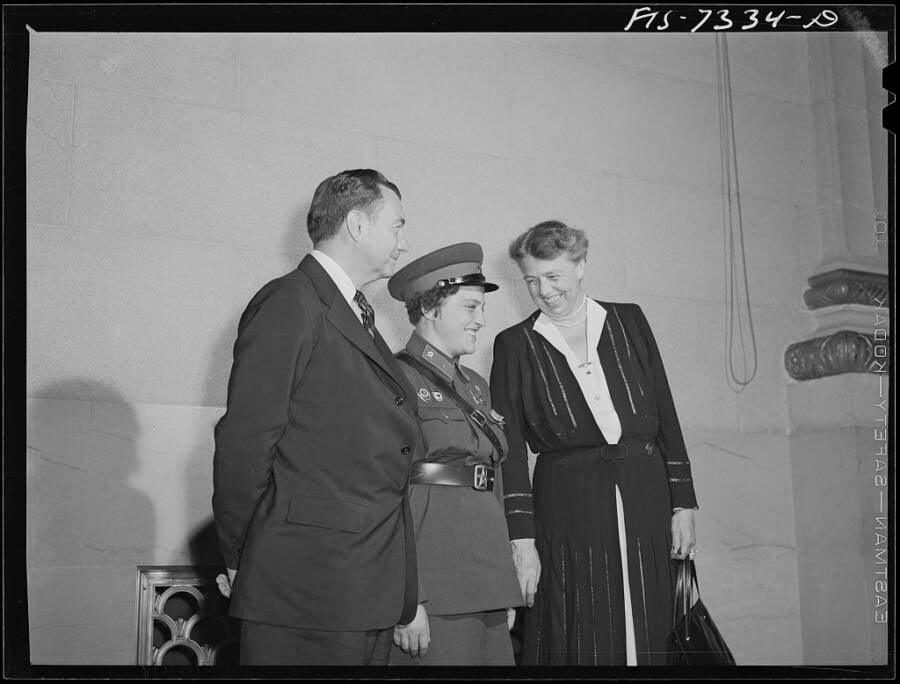
Library of CongressJustice Robert Jackson, Lyudmila Pavlichenko, and Eleanor Roosevelt during Pavlichenko’s press tour of the United States.
While she was traveling across the U.S., Lyudmila Pavlichenko was dubbed “Lady Sniper” and faced a barrage of inappropriate questions that left her stunned. As she told TIME in September 1942:
“I am amazed at the kind of questions put to me by the women press correspondents in Washington. Don’t they know there is a war? They asked me silly questions such as do I use powder and rouge and nail polish, and do I curl my hair? One reporter even criticized the length of the skirt of my uniform, saying that in America women wear shorter skirts and besides my uniform made me look fat.
This made me angry. I wear my uniform with honor. It has the Order of Lenin on it. It has been covered with blood in battle. It is plain to see that with American women what is important is whether they wear silk underwear under their uniforms. What the uniform stands for, they have yet to learn.”
Another time, a male reporter asked Pavlichenko what color underwear she wore beneath her uniform. She responded by ordering him to come closer so she could slap him.
During one particularly contentious speaking event in Chicago, Pavlichenko drilled into the crowd:
“Gentlemen, I am 25 years old and I have killed 309 fascist invaders by now. Don’t you think, gentlemen, that you have been hiding behind my back for too long?”
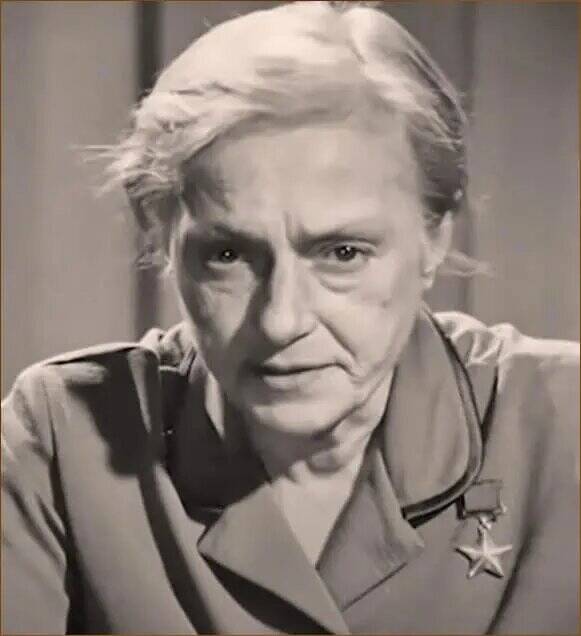
Soviet Television/YouTubeLyudmila Pavlichenko in her later years.
Upon her return to the U.S.S.R., Lyudmila Pavlichenko was given the Hero of the Soviet Union award, the country’s highest distinction. A stamp was also printed in her honor. She never returned to the front lines, but for the rest of the war, she trained other snipers for combat. Then, when the war ended, she finished her degree and began working as a historian.
Lyudmila Pavlichenko died at the age of 58 on Oct. 10, 1974, after suffering a stroke. Today, she is immortalized in history as the world’s deadliest female sniper and one of the best snipers of all time.
After reading about Lyudmila Pavlichenko, learn about Matthäus Hetzenauer, the Nazis’ deadliest sniper. Then, go inside the story of Roza Shanina, another female sniper during World War II.





